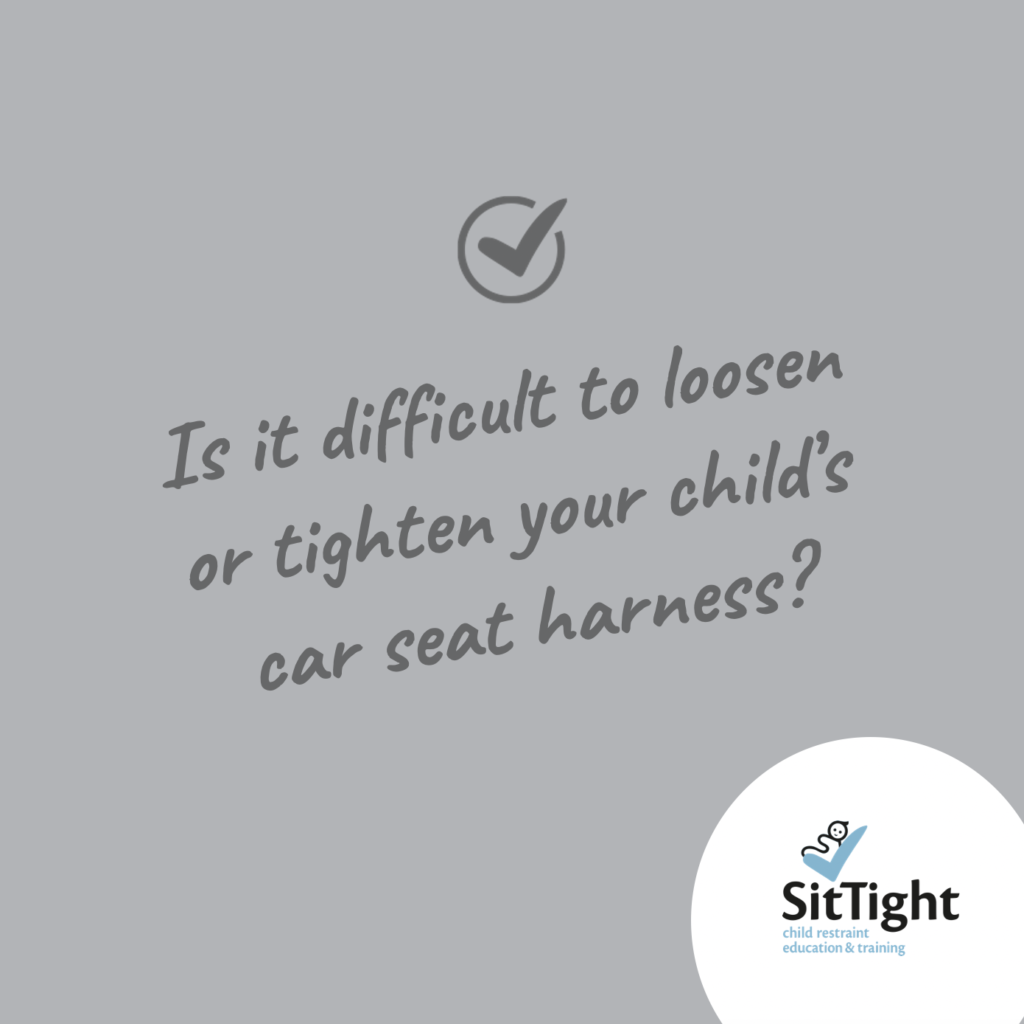
If you are finding that your child’s car seat harness is tight and you are having trouble loosening it off or tightening it when your little one is in their seat, there may be a simple solution to this.
The first thing to be aware of is that it’s important that you loosen off your child’s car seat harness every time you remove them from their car seat and then tighten it again when you put them back in. Doing this ensures that the harness is adjusted to their current growth/size every time they travel.
A simple solution to release your child’s car seat harness…
If you are having difficulty with your child’s car seat harness, here is a simple solution to try.
First of all, place your child in their car seat. Once they are in position, and they are seat correctly with their bottom and back are right up against the car seat back, you’re going to check where the car seat harness is coming through the seat shell – specifically, how far down their back is the slot that the harness is coming through?
What is restricting the car seat harness’s movement?
If the slot that the harness is coming through is more than 1-1.5cm below their shoulders, your child’s weight will start pushing against the car seat harness while you’re trying to loosen it off or tighten it up. Depending on how far down the child’s back the harness is, their body weight can cause a lot of resistance and can make it very difficult for the harness to move freely.
Moving the harness up to a higher slot may be all you need to do to allow the harness to move freely and, in turn, enable you to easily loosen and tighten it.
It can be that simple.
What is the correct position for a car seat harness?
Before you move the car seat harness up to a higher slot, it’s important to understand what the correct position is for the harness.
There are general rules relating to the correct harness position, but as always, you can find this information in your child restraint’s instruction manual. Always check this for the correct information relating to your specific car seat.
The general rules may change depending on the safety standard that the seat is manufactured to and also the direction that the child restraint is facing – whether it is being used rear- or forward-facing.
The general rules are:
- Australian standard child restraints (AS/NZS1754) generally require the harness to come through the slot that is even with, or slightly higher than, a child’s shoulders. This is the case whether the child restraint is in a rear- or forward-facing position.
- When rear-facing, US standard (FMVSS 213) and European standard (ECE R44 or R129/i-Size) generally require the harness to come through the slot which is even with, or slightly lower than, a child’s shoulders.
- When forward-facing, US standard (FMVSS 213) and European standard (ECE R44 or R129/i-Size) generally require the harness to come through the slot which is even with, or slightly higher than, a child’s shoulders.
This can seem confusing, but it doesn’t need to be. Just check your instruction manual for your particular restraint and all will be revealed!
Having the harness in the correct position is important. Car seats are designed and tested to ensure your child is protected as well as possible if a crash occurs, and the position of the harness plays a part in this.
If the simple solution above, doesn’t free up your harness, then feel free to get in touch with us. We may be able to work through some other troubleshooting scenarios to resolve the issue for you.
You’re always welcome to make contact with us at SitTight to ask questions about the correct, safe and legal use of child restraints. Or you can follow us on Facebook or Instagram.
If you would like advice from a local child restraint technician go to www.sittight.co.nz and click on “Find a CRT”.